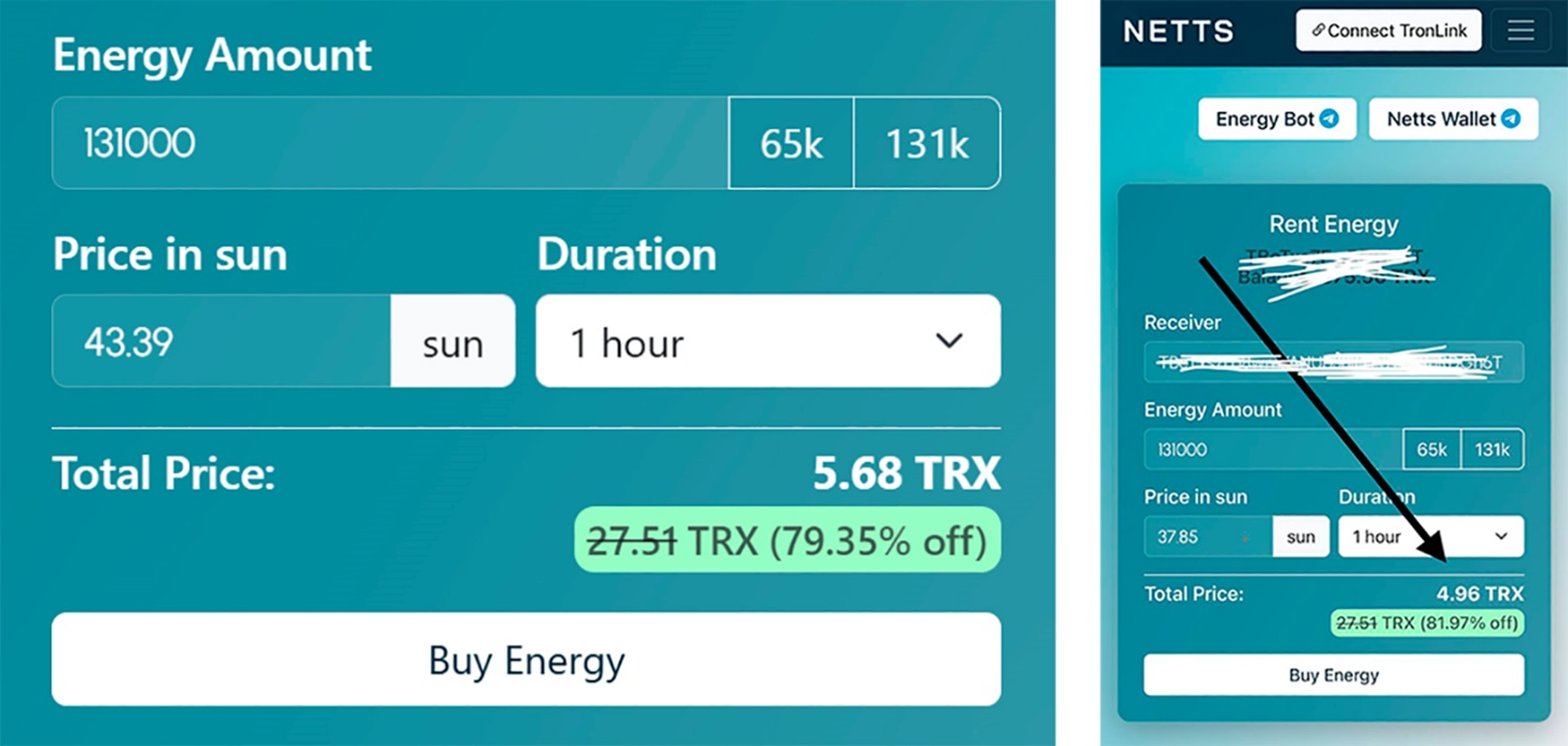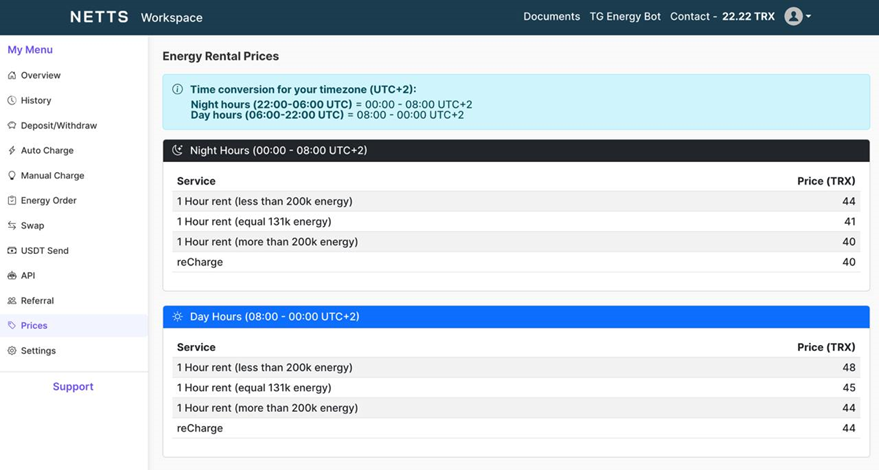Why Some USDT Transfers on the Tron Network Fail
The popularity of Tron network's Tether-based stablecoin continues to break all records for crypto coin popularity. USDT TRC-20 is pegged to the dollar at a 1:1 ratio and combines the best characteristics of cryptocurrency and fiat money.
Users are attracted by high transaction speeds, reaching 2000 TPS (transactions per second), and a flexible gas fee system using specially designed resources. Users are not required to pay for USDT TRC-20 transfers in native TRX crypto. It is much more profitable to use special resources Energy and Bandwidth.
For this reason, the USDT TRC-20 stablecoin holds the lead in transactions made with stablecoins by real people, not bots. All these efforts to support the stablecoin have been appreciated by Tether, the company that issues it. Just as this article was being written, it became known that Tether Treasury had completed the minting of 1 billion USDT on the Tron network.

In total, since the beginning of this year, Tether has issued a total of $8 billion USDT on this blockchain.
The TronScan blockchain explorer reports that over the past 30 days, 1.04 million accounts were transferred daily on the Tron network, which is 3.9% more than a month earlier. And the number of USDT TRC-20 holders has begun to count the 65th million.

Such popularity of a cryptocurrency coin pegged to the dollar exchange rate, of course, attracts various kinds of attackers. But this article is not about victims of fraudsters. Often, network users encounter failed transfers due to their own fault. Some of them simply do not know about all the capabilities of the Tron blockchain and the features of this flexible system based on the principle of dynamic energy supply.
In this article, we examine the main reasons for failed USDT transfers on the Tron network and offer solutions, including the use of Energy rental to prevent such problems.
Main Reasons for Failed USDT Transfers on the Tron Network
Possible reasons for failures during USDT TRC-20 transfers can be related to both a lack of funds on the user's balance (native crypto, special resources) to pay for gas, and sender errors. Let's consider the most common reasons for such failures.
Insufficient Special Energy Resource (Energy)
On the Tron network, you can use not only native crypto for transactions, as on other cryptocurrency blockchains, but also special resources – Energy and Bandwidth. If you do not have enough Energy on your balance, the transaction may not go through, especially if you also lack TRX (Tron's native crypto).
The special Energy resource can be used to pay for any transaction related to interaction with TRC-20 standard tokens, i.e., smart contracts, which the USDT TRC-20 stablecoin is.
Currently, to transfer USDT on the Tron network, you need to have ~65K or ~131K units of Energy on your balance. The first amount is for transferring to a wallet that already has this stablecoin, the second, as they say, is for an empty wallet, i.e., if the recipient's balance does not have USDT TRC-20.
By the way, do not forget that for transferring USDT on the Tron network to each address, you will also have to pay 345 units of Bandwidth.
If there are not enough of these special resources on the balance, Tron will "sell" them to you without interrupting the transaction and without warning, taking your TRX.
Insufficient TRX Balance to Pay the Fee
Even if you have Energy, if your account does not have enough TRX to pay the commission, the transaction may be rejected. This situation can arise if you have stocked up on Energy "just enough," not taking into account that Tron implemented a dynamic energy supply model several years ago. That is, all interdependent parameters change in real time. For example, the gas fee is directly proportional to the network load level. If such moments are not taken into account, then with a forced overuse of the Energy reserve and a lack of TRX, the user will receive the message "Failed — Out of Energy".
Incorrect Network Selection During Transfer
Tether is the world's first stablecoin pegged to the US dollar (1:1). Several cryptocurrency blockchains issue stablecoins based on it. In particular, for the Tron and Ethereum crypto platforms, Tether Limited created stablecoins based on the standards of these blockchains – TRC-20 and ERC-20, respectively.
But this does not mean that you can use the networks of these blockchains to transfer both types of Tether-based stablecoins.
Sending USDT through the wrong network (e.g., TRC-20 instead of ERC-20 or vice versa) can lead to loss of funds.
It should be remembered that irreversibility is a key characteristic of cryptocurrency blockchains as well. That is, USDT TRC-20 sent to an ERC-20 address is practically impossible to recover.
Incorrect Recipient Address
The reason for transferring USDT to the wrong address can be both a user error and the actions of fraudsters. In any case, an error in the recipient's address can lead to transaction failure and/or loss of funds.
If these are fraudulent actions, there is no possibility of recovering the funds.
In the case of a sender's typo in the address, two scenarios are possible: the transaction freezes or is confirmed. If the transaction is confirmed, you can contact the wallet holder and try to negotiate a refund. However, a positive outcome is unlikely, as fraudsters use a similar method on cryptocurrency blockchains.
Network Congestion
High activity on the Tron network can cause delays or failures in transaction processing. Therefore, the system draws on additional computing and energy capacities to maintain high network throughput.

Additional capacities are paid for by each user who performs transactions with smart contracts during this period, including USDT TRC-20 transfers.
What can happen: the user accurately calculated the need for special resources, but due to the additional load on the network, additional units of Energy and Bandwidth were taken from their balance. When the reserve of resources on the balance ran out, the system began to burn TRX.
In the best case, the reserve of native crypto was enough for the transaction, but part of the native crypto was unintentionally spent from the account.
If there is no TRX on the balance or it is insufficient, the transaction freezes.
Recommendations for Preventing Problems with USDT Transfers on the Tron Network
If the user knows the principles of the Tron ecosystem, including the features of gas fees, they will use special resources, avoiding TRX burning.
After all, to avoid failures during USDT transfers on the Tron network, just follow a few rules:
- Ensure a sufficient balance of TRX, Energy, and Bandwidth; before transferring, make sure you have enough funds on your account to pay commissions and provide Energy;
- Check the correctness of the recipient's address; carefully enter the recipient's address and make sure it is correct before sending;
- Choose the correct network for the transfer; before sending, check that you have selected the correct network (e.g., TRC-20 for Tron) when sending USDT;
- Monitor the network status; with increased system load, it is advisable to postpone the transfer or, if this is not possible, be prepared for possible delays and higher transaction fees.
But, of course, the most economical and safe method of paying for gas is to use special Tron resources. But many users have a question: where to get Energy in sufficient volume for successful transactions on the Tron network?
Energy Rental as a Way to Avoid Problems with Transfers
To pay for gas on the Tron network, you can use only special resources, without involving the native crypto of the TRX blockchain and other types of assets. But if the Bandwidth resource for a couple of simple transactions comes free to every wallet of ecosystem users, then Energy can be obtained in several ways: staking and renting.
In the staking process, you will, of course, receive the Energy due to you as a reward for free, which is very profitable. But for a couple of transfers a day, you need to freeze almost 24,000 TRX. Few users are able to withdraw such a volume of assets from circulation for half a month.
Moreover, it is not a fact that you will receive the volume of Energy you were counting on. Remember – the dynamic model? The share of the reward for staking (and this is a certain volume of Energy) is distributed among all network users who have sent their TRX to freeze.
How Energy Rental Helps in Successful Transactions
Renting Energy through special services built on the Tron blockchain is currently an ideal solution for those who regularly transfer USDT TRC-20 to a significant number of addresses.
Yes, this is not a free service, but your costs for renting Energy are significantly more favorable compared to burning TRX to pay for gas. To buy the necessary amount of Energy for one USDT TRC-20 transfer, you will need ~14 or ~28 TRX – depending on the state of the recipient's wallet (with or without USDT on the balance).
Compare these expenses with how much the NETTS Energy rental service deducted from its client's deposit for the maximum volume (131K units).

Why are the amounts small, but still different? We remember: the dynamic model. The second screenshot was taken during a period of minimal load on the Tron network – at night. Under these conditions, NETTS deducts from your deposit payment only for the Energy you actually used.

The deposit amount depends on which type of automation you choose. The service has left an option for those who make transfers irregularly and are ready to recharge their balance each time. To do this, you can simply fill out an application form on the website without using a deposit, but by prepayment.
The Telegram bot (deposit 15 TRX) and Workspace (minimum deposit 1 TRX) are designed for large business platforms that perform dozens of USDT TRC-20 transfers daily.
Connecting the NETTS service client's wallet via API allows you to choose the Energy "delivery" mode to your balance:
- by trigger – Smart mode;
- cyclically, according to a schedule – Host mode;
- continuously - Host mode.
Connecting to the NETTS Energy rental service via API is a solution to all problems related to gas fees on the Tron network.

If your Bandwidth reserves suddenly run out, 1 TRX will be sent from your deposit to your wallet, and the transaction will be successful.
Of course, not all Energy rental services provide API connection, and no one will give you savings on transactions of about 80%, like NETTS, but they all provide:
- significant reduction in transaction fees for USDT transfers on the Tron network;
- increase the probability of a successful transaction, because with a sufficient supply of Energy, you reduce the risk of transaction failure due to lack of resources;
- availability of Energy rental services that allow you to rent this resource for short periods to conduct transactions.
Conclusion
Failed transactions when transferring USDT on the Tron network can be caused by various reasons, including a lack of Energy and TRX on the sender's balance.
Renting Energy through special services is an effective way to reduce commissions and guarantee successful transactions.
We recommend using proven services for renting Energy and carefully checking transaction details before sending.
Clients of the NETTS Energy rental service do not worry about transactions going through. They are confident that there will always be enough Energy on the balance. Join now - https://netts.io - and keep 80% of your saved TRX.